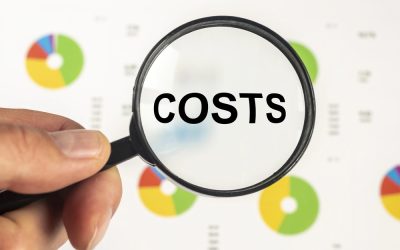 “Control your expenses better than your competition. This is where you can always find the competitive advantage.”
“Control your expenses better than your competition. This is where you can always find the competitive advantage.”
— Sam Walton
In honor of National Profit Month, we continue to dedicate the newsletter to presenting ideas to help you reduce or eliminate expenses in your beer business.
This week, we’ll review the benefits and tremendous cost-saving potential of a new mileage reimbursement program.
I know you’re doubtful about this one, but bear with me. Crescent Crown, one of the top 10 distributors in the U.S., saved $600,000 annually by changing their mileage reimbursement program.
It is amazing how small changes can make a huge difference in the profitability of a company. And this idea can make a big difference in your bottom line.
In past issues we’ve looked at how to save money using outside services for LED lighting upgrades, property tax abatements and energy contracts. The best part of these ideas is that they require very little (if any) effort on your part to implement.
By choosing the right outside service you can get big time savings, with minimal investment in time or resources. I’ll guide you through the process of making your selection. It’s the least I can do during National Profit Month.
And now, the story of how Crescent Crown saved $600,000 by changing their mileage reimbursement model… and how you can too.
“There are many experts on how things have been done up to now. If you think something could use a little improvement, you are the expert.” –Robert Brault
The beer distribution business requires us to get from point A to point B as efficiently as possible. It’s what we do – we’re in the logistics business.
Our trucks must be optimized and routed properly to run the most efficient and cost effective routes. So too, our sales and merchandisers must run efficient routes.
There are several ways that we pay for sales and merchandisers to get from point A (their home, or the warehouse) to point B (the customer), in order to do their job:
- Company car. The employee is given use of a company vehicle. All costs associated with the vehicle (maintenance, repairs, gas) are all covered by the company.
- Vehicle allowance. The employee is given a fixed allowance to cover the cost of operating his own vehicle.
- Mileage reimbursement. The employee is paid a variable amount – typically a number of cents per mile – for the use of their own vehicle.
Each of the methods above, while imperfect in it’s own way, gets the job done. The employee gets a car – a company car or their own – and the employer pays for it. The problem is that under each of these methods there are winners and losers.
For instance, in some cases, the employee is over-paid for the use of their vehicle – their costs are low (they are still driving the K-car that mom gave them when they graduated high school).
In other cases, the employee is not reimbursed enough to cover the costs to fill the gas tank. We’re in New Hampshire, it’s important to drive a massive 4-wheel-drive pickup with dualies, and two snow mobiles in the bed of the truck. Not ideal for fuel economy, but deemed necessary by the New Hampshire locals.
So, what is a beer distributor to do? We want to be fair to employees and reimburse them for the actual costs to operate their vehicle. However, we don’t want to pay an absurd amount to fill the tank of the F350 with the two snow mobiles. Bottom line, distributors want to pay a fair amount, for the type of vehicle they need to do the job.
Enter Runzheimer, a company that provides “Tailored, Data-Driven Business Vehicle Programs to Reduce Costs.” In other words, they provide a mileage reimbursement program that is fair to the company and the employee.
In a traditional cents per mile reimbursement program, those employees who drive more miles are going to be over-paid (relative to their actual costs) and those who drive less may be over-paid. This is a function of the fixed and variable nature of vehicle costs.
Fixed costs include things like insurance, taxes and depreciation. These don’t change with the number of miles driven. Variable costs include fuel, maintenance and tires. These expenses go up as mileage increases.
Runzheimer’s proposition is to design a reimbursement model that takes into account the fixed and variable nature of vehicle costs. It’s fair to the employee and employer.
So how does this mileage plan work, and more importantly, how can you use it to reduce expenses?
Runzheimer uses a software application called Equos which can be downloaded on any smartphone. The app tracks the mileage driven, and can even use GPS to ensure the driver stays on the proper route.
To start, each salesperson and merchandiser in the program downloads the app to their phone. At the beginning of the work day they start the mileage log, and at end of day they tap to end. The mileage for the day is captured and recorded on an IRS compliant mileage log.
This is another important point – many distributors provide mileage reimbursement ‘tax-free’ to employees. In other words, no taxes are withheld from this payment as it is provided under an ‘accountable plan’.
An accountable plan, as defined by the IRS is a reimbursement arrangement adopted by the company that requires employees to substantiate their business-related expenses to the company within a reasonable time. To meet this requirement you have to keep proper books and records and be able to produce them when the IRS comes knocking. Runzheimer’s application makes sure this is taken care of, and information is properly documented.
You can find more details on IRS accountable plans here. I don’t recommend clicking that link unless you’re a CPA or a sad, sad person with very little else going on in life.
Now, to the saving of money. As noted earlier, there are winners and losers in most reimbursement plans. Some employees are over-paid and some are under-paid. Runzheimer takes your company data – miles driven by employees, and the reimbursement amount – and runs this through the new fixed/variable reimbursement model.
In many cases, the amount of employees who are being over-paid is far greater than those employees who are being under-paid. The result will depend on the mix of drivers (high mileage vs low mileage) and which fixed/variable reimbursement model you choose to go with.
Crescent Crown Distributing saved $600,000 annually using this process. How much could you save? There’s only one way to find out, give Runzheimer a call, listen to the presentation and see if there are savings there for you.
Crescent Crown saved a boatload of money in this process and you can, too. Do your part for National Profit Month: Follow the steps, reduce your reimbursement costs, and get from point A to point B without over-paying. Now, where did I park my truck…time to go snowmobiling.




